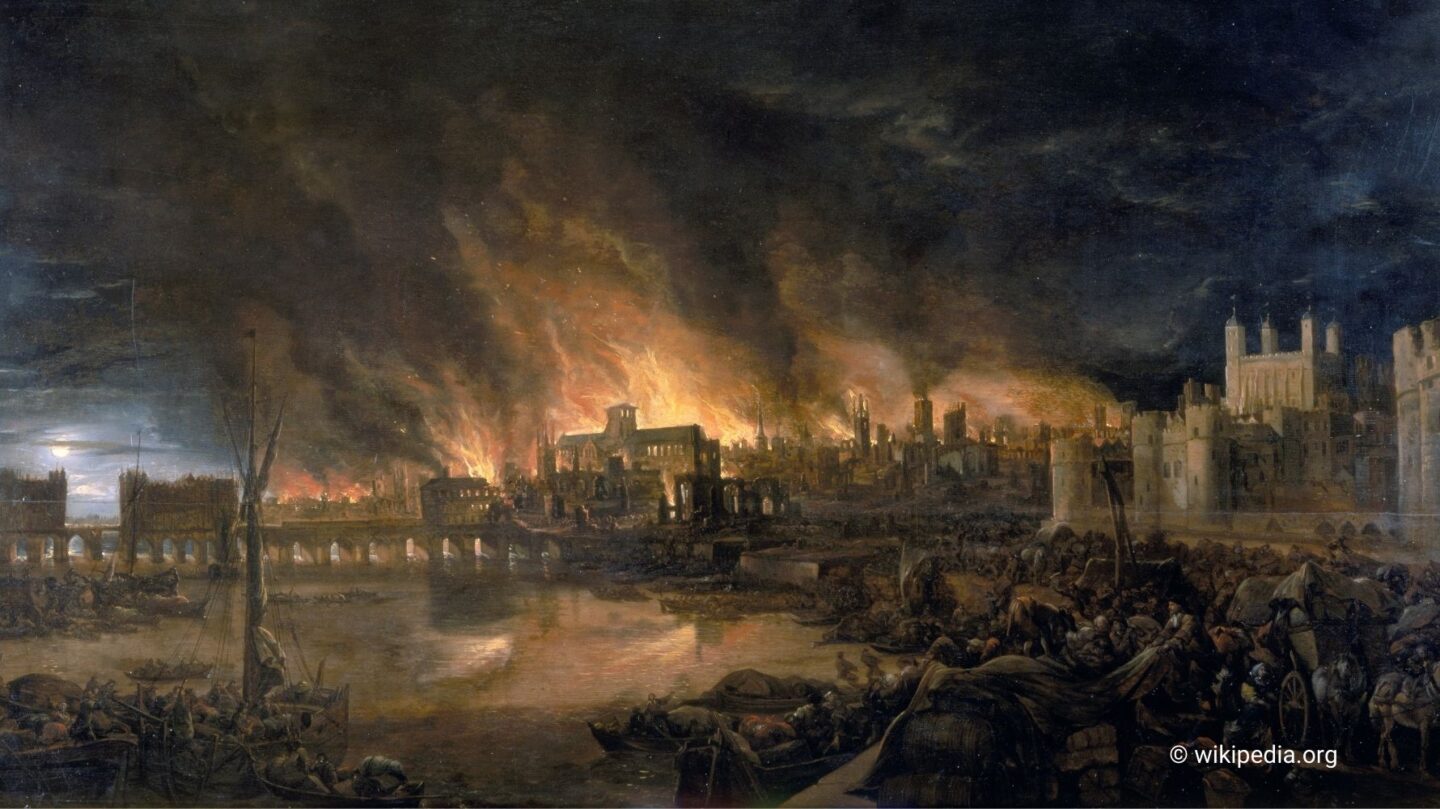The Inferno Begins
On September 2, 1666, a catastrophic fire broke out in the city of London, forever altering its landscape and history. The fire started in a bakery on Pudding Lane, owned by Thomas Farriner. What began as a small, localized blaze quickly spiraled out of control, fueled by dry timber buildings, narrow streets, and strong winds. The inferno raged for four days, consuming much of medieval London.
By the time it was extinguished, the Great Fire had destroyed over 13,000 homes, 87 churches, and iconic landmarks such as St. Paul’s Cathedral. Miraculously, the death toll was reportedly low, though the exact number remains uncertain. The destruction left tens of thousands homeless and marked a turning point in the city’s development.
The Devastation of Medieval London
Before the fire, London was a city of timber-framed houses and crowded streets, conditions that made it particularly vulnerable to fire. Many of the homes were old and built in close proximity, with upper floors often jutting out over the streets. The city’s sanitation and hygiene standards were poor, with open sewers and unregulated building practices.
The fire not only destroyed infrastructure but also the lives and livelihoods of countless Londoners. Entire neighborhoods were reduced to ash, and many citizens lost everything they owned. Despite the devastation, the fire also presented an opportunity for London to rebuild on a more modern and organized foundation.
The Visionary Rebuilding of London
In the aftermath of the fire, the city faced the monumental task of reconstruction. King Charles II took charge of the recovery efforts, commissioning architects and urban planners to reimagine London. Among the most notable figures was Sir Christopher Wren, who proposed a grand design for the city, with wide streets and spacious squares inspired by European cities like Paris.
While Wren’s ambitious plans were not fully implemented due to cost and logistical challenges, some significant changes were made. Building regulations were introduced, banning the use of timber and mandating the use of brick and stone to reduce the risk of future fires. Streets were widened, and a new sewage system improved sanitation.
One of Wren’s most celebrated contributions was the rebuilding of St. Paul’s Cathedral, which became a symbol of London’s resilience and renewal. The iconic dome of the new cathedral remains one of the city’s most recognizable landmarks today.
The Economic and Social Impact
The Great Fire had far-reaching economic consequences. The destruction of businesses and trade hubs like the Royal Exchange disrupted commerce and caused significant financial losses. However, the rebuilding efforts also created jobs and stimulated the economy, as craftsmen, laborers, and architects worked to restore the city.
Socially, the fire highlighted the need for better urban planning and fire prevention measures. The tragedy also brought Londoners together in a spirit of resilience and cooperation. Charities and the government provided support for those displaced, while the rebuilding process became a collective effort.
A City Transformed
The Great Fire of London was a defining moment in the city’s history, reshaping its physical, social, and economic landscape. The new regulations and architectural advancements not only made London safer but also laid the groundwork for its transformation into a modern metropolis. Today, the fire serves as a reminder of both the fragility and the enduring spirit of one of the world’s greatest cities.
